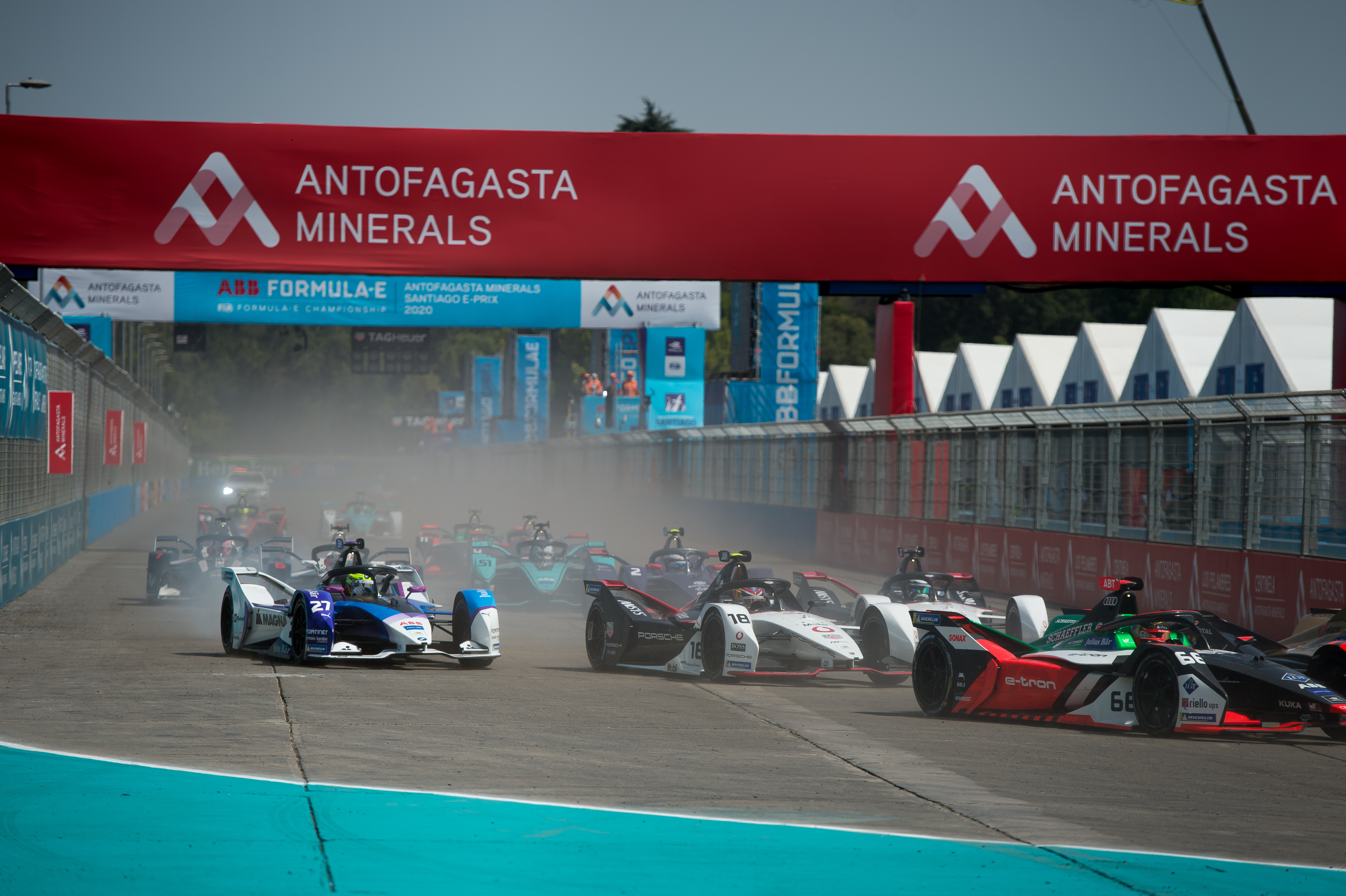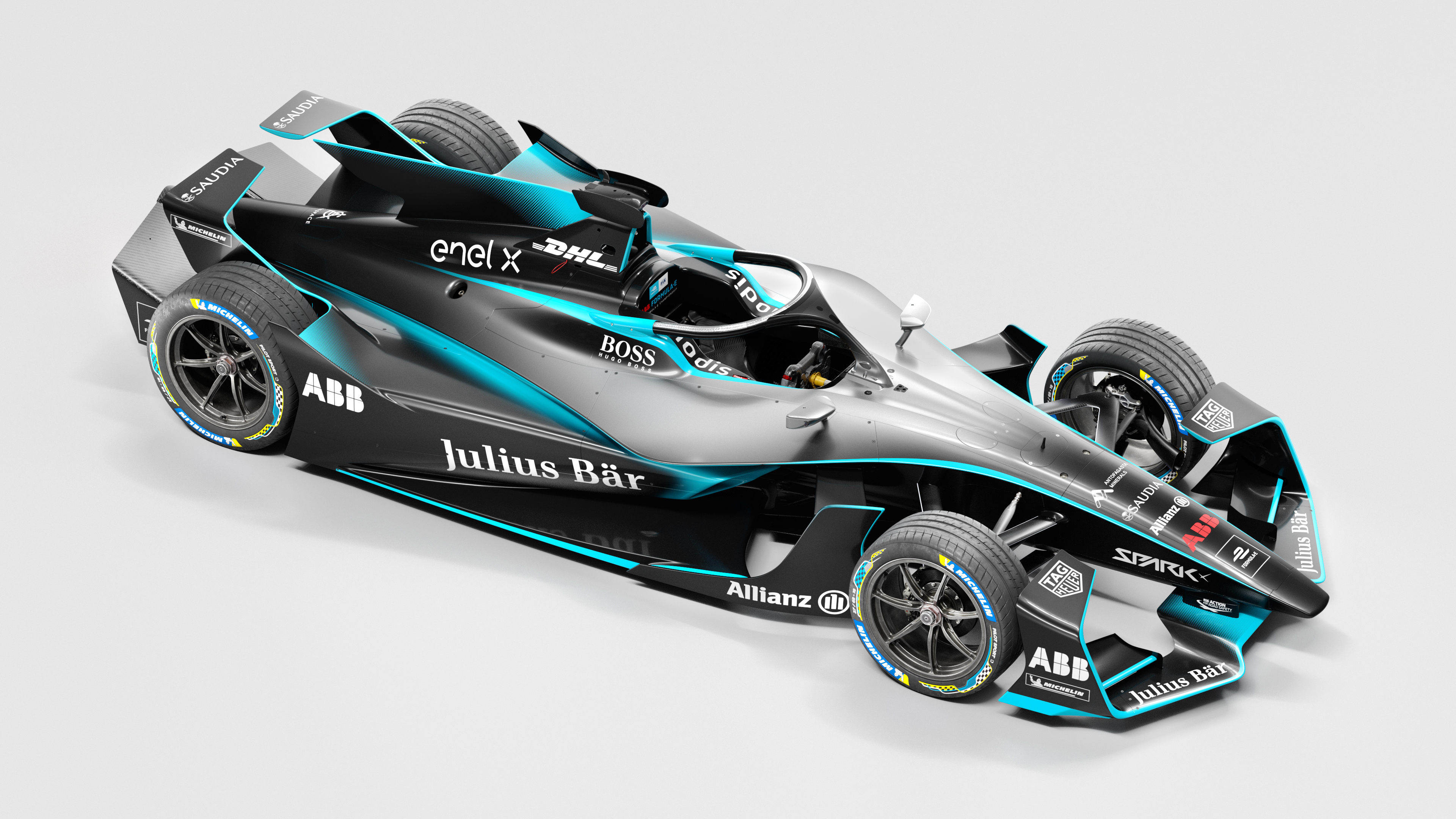Formula E paddock reaction to the new Gen2 EVO spec Formula E car for the 2020/21 championship has been mixed since its digital unveiling on Tuesday morning.
The main objective of the changes was to provide a less sturdy front than the all-encompassing front section that covers the wheels of the Gen2 car.
The new configuration should be more prone to being damaged by contact between cars, so has been designed in the hope of promoting cleaner racing.
However, it could lead to the wings detaching more often and causing further incident or escalating the need for race neutralisations due to debris on the track.
BMW i Andretti Motorsport team principal Roger Griffiths, who has overseen two victories from the last three Formula E races, believes that drivers may initially be more cautious when driving the modified cars next season.
“I think it might make people think twice about being overly aggressive but we may actually find with what the FIA and Formula E have done with taking some of the tighter chicanes out that we don’t get heavy contact so much now anyway,” Griffiths told The Race.
“They have said they wanted the cars to be a bit more fragile at the front and I think they have probably achieved that with these changes but we’ll have to wait and see really.
“That is something that has been talked about from the outset.

“We definitely don’t want to be creating any more full course yellows or safety cars.
“As the physical parts don’t exist yet it is hard to tell in terms of the construction or if there are any weaker points.”
Initially there had been concerns that the existing Gen2 car could suffer from ricochet damage that would cause the front section to come off easily.
However, this proved not to be the case and very few incidents have occurred where the bodywork has fully come off during races.
The other striking change will be the addition of a shark fin that will make-up part of the rear bodywork section of the new-look car.
Griffiths was largely responsible for the introduction of this part of the design.
The implementation of it was a response to the relative lack of vertical surfaces on the Gen2 car. In traditional racing car design this is where partners can be displayed for maximum visual and televisual impact.
“The changes are being made for good reasons but there is the potential for having more debris on the track, which means more time spent not racing – which no one really wants” :: Sam Bird
The Race understands that the shark fin idea was originally mooted by Griffiths at a special Technical Working Group meeting at the Bern E-Prix last June.
Thereafter the idea gathered momentum and was quickly accepted by the relevant parties as something to include in the update.
“We said that ‘if you are going to do this update and part of it is to address the contact situation’ then how about we address some of the surfaces we lost, like the conventional rear wing, the mainplane, endplates, flaps, etc when we went from Gen1 to Gen2,” explained Griffiths.
“The easiest way to achieve more surface area is to have a shark-fin style piece off the engine cover and it has been done in a way that it is incorporated into the existing engine cover so it is relatively cost-effective.”

Shark-fin elements to engine covers and rear bodywork have been used in several categories over the years including in CART Indycar during the 1990s, Le Mans Prototype designs during the last 15 years and also in Formula 1.
Often such sections are introduced to stabilise the yaw of the cars and act to stop cars taking off in incidents.
Drivers have been largely cautious in their appraisals of the changes with Audi’s Lucas di Grassi telling The Race that he favours “the wheels covered like now” because he feels that for “aesthetic, raceability and technical reasons” the original Gen2 design is preferable.
Envision Virgin Racing driver Sam Bird, who took the first win of the current Formula E Championship season, said worries about the changes creating more debris from incidents seem well-founded.
“Having less contact between cars has to be a good thing and there is no doubt we have seen more since Gen1,” Bird told The Race.
“There is no quick fix that will eliminate everything with contacts between cars, especially on street tracks.
“Yes, there could be more debris on track or more getting called in for wing damage if they are not as strong.
“For me the changes are being made for good reasons but there is the potential for having more debris on the track, which means more time spent not racing – which no one really wants.
“But we just have to see what they are like in the flesh.”
The modified Formula E car for the 2020-21 season will be seen for the first time at the Geneva Motorshow on Tuesday 3rd March.
Manufacturers are expected to get their update kits from Spark Racing Technologies in early July after which they will be free to test as part of their allocation of manufacturer development days.




